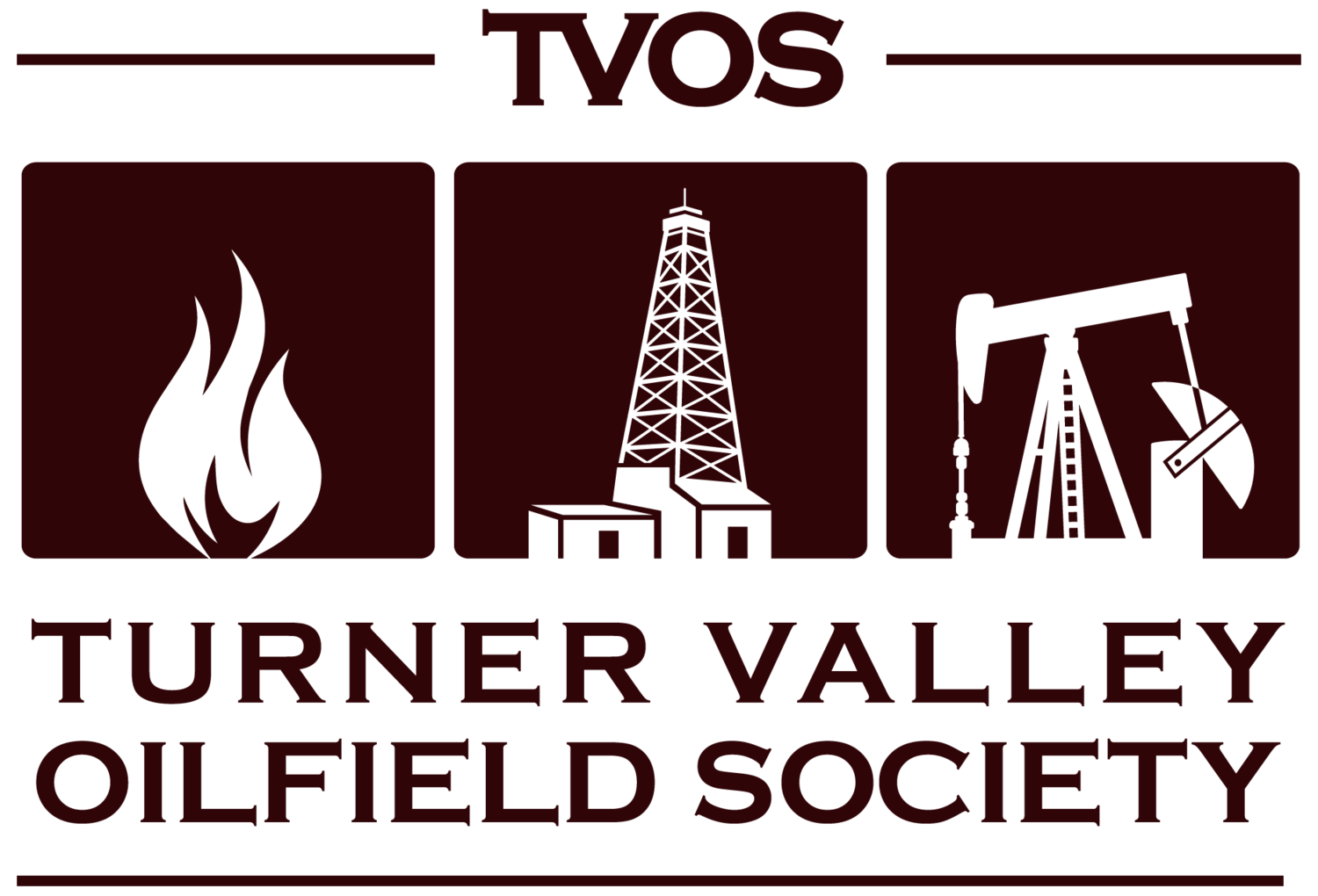TVGP Process Flow Description
Turner Valley Gas Plant National and provincial historic Site (Attachment 1: 1946-1985)
INTRODUCTION
If you have ever toured this historical plant you may have heard the tour guides describe the area oilfield activities in the terms of "find it, get it, clean it, and move it". The more technical terms would be "discover, extract, process, and transport to market".
The brief descriptions below relate to the "clean it" or processing phase which occurred at this plant. The numbers included in the attached plot plan are intended to illustrate the route taken by the "raw" gas from the Turner Valley oilfield as it passes through the "cleaning" stages of the Turner Valley Gas Plant.
#1 Compressor Plant
The raw gas enters the facility at the Compressor Plant via underground pipelines. Reservoir pressure had declined significantly due to the early flaring period of the natural gas. Consequently, the pressure of the inlet gas was lower than that required by the subsequent processing units. Most of these compressors (9 of 10) were used to increase the raw gas pressure to a minimum of 2275 kilopascals (330 psi). This was considered a substantial pressure at the time of installation whereas later gas processing plants operate at four times this pressure. Underground pipelines then deliver the pressurized gas to the Absorption Plant. One of the compressors was reserved for high pressure gas reinjection (storage) during summer months when demand for gas was low.
#2 Absorption Plant
The compressed raw gas enters at the bottom of the absorber towers exiting at the top. Absorber oil (similar to kerosene) enters at the tower top and exits at the bottom. During the period of countercurrent flow, the oil absorbs valuable hydrocarbon liquids from the gas stream. These liquids are commonly referred to as liquid petroleum gases or LPGs and are a mixture of propane, butane and condensates. Originally, the condensate liquid recovered from the discovery wells was often referred to as "natural gasoline". The now "dry" raw gas (i.e. liquids removed) from the top of the absorption towers travels via underground pipeline to the Scrubbing Plant.
#3 Scrubbing Plant
The Royalite #4 well discovered natural gas in the Mississippian Limestone formation. The term "Mississippian" refers to a geological time period about 300 million years ago. The gas from this formation contained a significant quantity of hydrogen sulphide (H2S) which had be removed to make the gas non-toxic and meet sales contract specifications. As the name suggests, this plant "scrubbed" the H2S from the gas. The mechanics of this process are like the absorption process in that the gas enters the bottom of the scrubbing towers while the monoethanolamine (MEA) liquid enters the top. During the countercurrent flow in the towers the MEA absorbs (or "scrubs") the H2S from the gas stream. The scrubbed gas is now ready for sale after first passing through a dehydrator to remove excess water vapour. The Canadian Western Natural Gas sales meter station is shown as location #4. The CWNG pipeline system then "transports" the gas to market, the "move it" activity.
The Scrubbing Plant also includes two regenerator towers. These towers purify (or regenerate) the MEA using heat to remove the absorbed H2S. The regenerated MEA is then recirculated, by pump, to the scrubbing towers to absorb further H2S from the incoming gas stream.
#5 Sulphur Plant
The H2S gas removed in the Scrubbing Plant is piped to the Sulphur Plant. This plant was installed in 1952, the second such plant in Alberta. The first plant was installed at the Shell Jumping Pound Plant in 1951. The process used to transform the H2S gas into elemental sulphur is known as the Claus Sulphur Recovery Process. First, a portion of the H2S is burned in a Reaction Furnace to form sulphur dioxide (SO2). Then, the H2S and SO2 react at high temperatures in a catalyst bed to form elemental sulphur and water vapour. These first two plants used only one catalyst bed while later designs used up to three to maximize sulphur recovery. The elemental sulphur is initially an amber coloured liquid which, when cooled below 115 degrees Celsius (240 degrees Fahrenheit), forms a solid, canary yellow in colour.
#6 Gasoline Plant
The Gasoline Plant operates in a fashion similar to the MEA regenerators in the Scrubbing Plant. The oil from the bottom of the towers in the Absorption Plant contains LPG liquids absorbed from the gas stream and is referred to as "rich" oil i.e. rich in liquids. The gasoline plant regenerates the rich oil by using heat to remove the liquids using a distillation process to return the oil to a "lean" condition. This lean oil, like the regenerated MEA, is recirculated (pumped) back to the absorption plant to absorb further LPG liquids from the incoming gas stream.
#7 Propane Plant
This plant is attached to the Gasoline Plant. The purpose of this equipment is to separate the LPG liquids recovered in the Gasoline Plant into individual products. The initial products were condensate and a mixture of propane and butane. The condensate product was stored in the Tank Farm (location #8) while the propane/butane mixture was stored in the Horton Spheres (location #9). The condensate product was trucked to market while the propane/butane mixture was pipelined to the Imperial Oil refinery in Calgary where it was separated into individual products.
Author – A. Lambden, P.Eng.
References:
➢ Turner Valley Gas Plant Site and Building History – David Finch, March 1998
➢ Waste to Wealth A History of Gas Processing in Canada – Fred Stenson
➢ Hell's Half Acre Early Days in the Great Alberta Oil Patch – David Finch
➢ Corridors of Time – Aubrey Kerr
➢ The Treasure-Seekers The Men Who Built Home Oil – Philip Smith
➢ Turner Valley Oilfield Society historical documents
➢ Personal experience at site during plant operation


